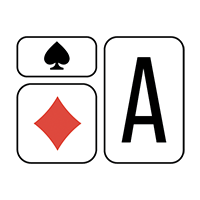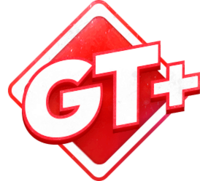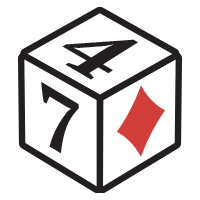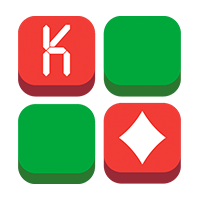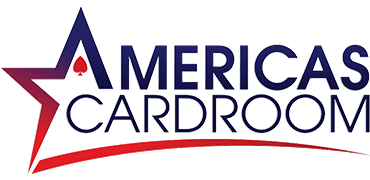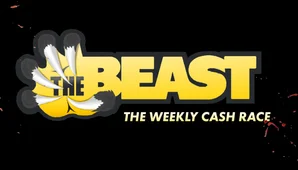In mid-March, Hustler Casino announced the return of the Million Dollar Game. The lineup was kept secret for a long time – there were rumors, for example, that Daniel Negreanu, who has not played cash games for a long time (especially at such ultra high-stakes), would be a participant in the show. Alan Keating also tried to add intrigue :
"I’d love to see Daniel Negreanu at the million dollar game.
I think we all want to see these last-gen names play deep cash. Will he play slow and tight and run from tough decisions like a lot of the big names? How will those famous hand reading skills play when the pots a million dollars hard cash?"
Negreanu never showed up for the stream, but the three nine-hour sessions were still red hot without him, and Keating became one of the highlights of the battle. Doug Polk dedicated several videos to the spectacle, and we selected 5 of the largest and most interesting.
Keating vs. Texas Mike: $2.03M Pot
Doug Polk – The number one largest pot from the show this week I already reviewed on this channel, so I won’t go into it too much. It was the trips-over-trips hand between Alan Keating and Texas Mike, where Texas Mike got a very, very fortunate river card in order to save himself a lot of money.
This was the only pot from the week that ended up over $2 million, and frankly, I can’t think of two players better suited for that hand. These guys battled it out in every single session during Million Dollar Cash Game week, and played some of the loosest poker of anyone in the game.
$1,000/$1,000, $2,000 ante . Peter on the button bets $7,000 with , Mike calls with . I think he’s making a bit of a statement — he’s up a million dollars, he’s here to play some hands, and he’s certainly not going to be tightening up now with this big lead. But I think I’d like to see him let go of a hand this weak. Although, what am I going to say? The guy’s playing 85% VPIP — I guess he’s doing his thing.
Now, not to be outdone, Keating looks down at an offsuit weak King. So I mean, I guess — forget it, let’s play whatever cards we’ve got. This is poker at these stakes. You just play whatever two cards you’ve got. At $500/1K/2K, it’s essentially bingo. You just pick two cards, put money in, see what comes out, and try to hit five in a row. Steve now calls with ten–eight offsuit, which looks like a goddamn premium with the kind of hands we’re seeing from these players.

We take a four-way flop — and it is a doozy. On , it's three of a kind now for Texas Mike. Three of a kind with a better kicker for Keating.
Peter checks to Texas Mike, who decides to bet half pot. I’d like to see a bit of a smaller flop size — particularly in multiway pots, we tend to like to go a little smaller, especially in these more polarized spots. Either way, I do like the bet from Texas Mike.
Now to Keating with king–six. Versus small sizes, I think king–six would mainly raise, but versus this bigger size, calling becomes a bit better — which is what Keating decides to do.

The turn rolls off an offsuit . After the other players get out of the way, Texas Mike continues to blast — betting $42,000 here on the turn. This is the point where Keating decides it’s time to spring the trap, making it $160,000 to go. I like this line from both players.
Back over to Texas Mike — when you have a six here with the overcard, you’re going to have to call. You could improve to essentially the nut boat if a ten comes off. And of course, there’s a decent chance Keating is bluffing — and when you have a six, it's a little more likely. So in this spot, I would prefer to always call, which he does.
We have a very big pot developing here as we take a river .
Texas Mike needs a lot of help — and he’s going to get it. The board pairs again. Now both players have the exact same full house — three sixes, two threes. It’s a bit of an action-killing card. Now, obviously, all of the trip-six hands are the same value. Neither player really has a three, so there’s not a lot of value to be had.

Keating is certainly not going to bet–call a straight or a three or anything like that. So realistically, he’s kind of hoping maybe Keating has a hand like pocket fours and is going to make a crying call. But realistically, I don’t think that’s the case. I think in this situation, the way Texas Mike should play it is he should mainly be calling. And when he does raise, he should be all-in — with hands like pocket sixes, pocket threes, or 6–4 suited. Then once in a while, you throw a six in there to put your opponent in a miserable, miserable spot.
Let’s say you do jam here and Keating has a hand like queen–six — he’s probably going to have to call. But it is for so, so much money. And then you can stack him when you have those better boats. I’m not sure if that’s correct — the solver is going to do a better job than I am — but I’m just letting you know my opinion. And you know, I have played some high-stakes poker along the way.
That said, I just don’t think this raise accomplishes very much. Even though it’s incredibly likely you do have the best hand, if you are going to raise with a hand like this, I think you should probably be raising to $450,000 or trying to go all-in to get your opponent off a chop.
Either way, Texas Mike is from Texas — or rather, not from Texas, but went to school in Texas — and is embracing that Texas spirit. Everything’s bigger here, including our raises. He makes it $825,000 to go with a six. Keating makes the call. They chop up a $2 million pot. Even though the hand is a chop, I thought it was an important one to take a look at.
Keating vs. Peter: $1.95M Pot
$1,000/$1,000 ante $2,000 . Peter opens UTG with , Alan in CO calls with . The hand is so-so, but the stacks are super deep, he's in the position: no judgment, 100% understanding!
Jack in the small blind finds and 3-bet $26k – this size looks pretty good to me. I might go a smidge bigger here, but all in all, I like the sizing from Jack.

Pav gets out of the way. Back over to Peter with pocket jacks. This is a spot that some amateur players might overplay slightly. While jacks are quite a good hand — and maybe once in a blue moon, I don’t hate the idea of a 4-bet — typically speaking, you want to just call here and play in position against Jack’s range. That said, when you do call with jacks, you allow Keating in behind, which might make you a little more likely to 4-bet than usual. However, I still prefer the call — which is what Peter decides to do.
Now over to Keating with queen–ten offsuit. I really dislike calling with this hand. You're going to be quite dominated against a lot of the hands that Jack 3-bets. I’d way rather call with some low suited garbage than an offsuit Broadway hand like this.
The flop of for Peter is terrible. Jack is in the lead here with pocket queens. This is a very bad situation now developing for Peter with pocket jacks — you are dead. The only way you can win against Jack is by hitting a jack — which is pretty ironic.

Jack now decides to bet $35,000. I think this is probably a little too big. Generally speaking, on connected boards, out of position, multiway, you do a lot more checking. The lower your overpair, the more you check.
Over to Peter with jacks, facing this $35,000 bet — I think this is a pretty clear call. Raising doesn’t accomplish much. You’ll knock out worse hands and get called by better ones. So I like the decision to call, which Peter does.
Now over to Keating with queen–ten, with a spade and a diamond. I think this is absolutely a fold. This hand is going to be way behind both players. But Keating has other ideas in mind, and in signature Keating fashion, pops it up to $180,000. I guess the thing I’ll say about this situation is that you do have the ten of diamonds, which is a semi-useful card when raising on this board. But at the end of the day, this is just extremely too aggressive.
Now, it’s possible Keating has some reads here — maybe he knows Peter is unlikely to call strong hands on this flop. And he also probably knows this board will be awkward for Jack. This low-connected board certainly hits Keating’s preflop range more than either of the other two players. So maybe he’s just making a move here — representing some hands he can actually have. One of the advantages of playing an extremely high VPIP strategy is that you can credibly represent these low, connected boards.
Keating’s raise to $180,000 puts Jack in a terrible position. I think with pocket queens here, you're going to have to just call. In fact, versus this sizing — a flop raise — I would almost always call.
Now over to Peter with pocket jacks. I know this sounds nitty — folding jacks on a seven-high flop — but I think Peter should go ahead and get out of the way here. Jack can absolutely have queens, kings, aces — and then Keating will also sometimes have flopped a big hand. So when you have jacks in this situation, not only could you be drawing extremely thin versus both players, it’s also very unclear what cards are good for you on future streets.
So I think in this situation, I’d like to see Peter fold and just get out of the way. But I’m not playing in the Million Dollar Game — and Peter does make the call.

On the turn comes out , and this pot is already worth more than a brand-new Lamborghini. The action now checks over to Keating. It makes a lot of sense for Jack and Peter to check all of their hands here. Now Keating has to decide what he wants to do. He’s got about one pot-sized bet left behind. He could bluff here — but if either player doesn’t believe him, he gets stacked with no equity. Or he can check it back and look to play some rivers — which is what he decides to do.
River – a scary scare card for both Jack and Peter. If either player has an ace, they’ve now moved into the lead. And of course, the front-door flush gets in.
You know what's important in the Million Dollar Game? The ability to empty the reel in time and go for everything – Alan pushes $663k! This time the bet makes sense – the ace is unlikely to please either opponent, the ten of diamonds in our hand blocks flushes. And in Jack's or Peter's place, anyone would bet a flush themselves.
Once again, the action checks all the way over to Keating — and this is why it’s so important, when you play in a million-dollar game, to be willing to fire a bullet for your entire stack.
Many players would be way too scared to load the gun and fire the last one off — moving all in for two-thirds of a million dollars on the river. This bluff makes a lot of sense. He has a diamond, blocking the flush. It’s pretty unlikely the ace hit either player. And if one of them had a flush, they might have bet it themselves.
This is a spot where, pretty clearly, both other players are weak. And Keating is making a move that absolutely should work—going all in for $663,000.
Jack does get out of the way and now back over to Peter:
- Pocket jacks.
- No diamond.
- Ace out there.
- Getting jammed into two players.
- Keating could maybe have an ace.
- Could maybe have two pair.
- Could be trapping a flush or a set. or something else entirely.
But Peter has played a lot versus Alan Keating — and let’s be honest, he’s been on the losing end over and over again. At some point, you get sick and tired of getting pushed around — or maybe you just have a read on your opponent.
However you want to chop it up, this is a hand that in theory you fold all day — but Peter knows his customer. And in this exact moment, he’s finally going to catch the wild Alan Keating.
There’s the call.

Keating vs. Nik Airball: $1.6M Pot
$500/$1,000, $2,000 ante. Nik opens standardly with . The entire table folds, but unfortunately for Nik, Keating finds a premium in the big blind – . The hand is perfect for the Million Dollar Game, and people will watch the stream – folding is out of the question.

Flop is a cooler – ! Keating makes two pair, and Nik has a straight flush draw. Both players are ready to go all the way.
Keating checks. Bad call: We always want to bet a hand this strong. Nik makes a $5,000 continuation bet and gets raised to $35k. Airball has two good options here: he can call the monster, but he can also be more aggressive by 3-betting.
Even if the opponent has a higher flush draw, we can make a straight, and we have 2 outs to a straight flush. And against a pair or two pairs, we have a ton of equity! Nik chooses to call.

The turn is a bad fit for the preflop aggressor's range: 83 or 43 are rarely in his range. And after calling the check-raise, it will drip on almost all strong hands. So Keating bets $60k again for $85k. Doubtful: the hand is not worth that much. But Alan thinks he is still ahead. To be fair, he is!
Nik has a tough decision. Keating is almost openly declaring that he has a full hand with a bet of this size. He wouldn't barrel the turn with a bare 8 or 4, and there are no threes in a check-raise on the flop.

The sizing is very polar, so if I were Nik, I would call. The more polar the opponent's range looks, the more often we should call in position: this way we give him a chance to bluff on the river and do not miss EV.
But in this particular spot, Keating's hand doesn't look strong – his two pairs are worthless, he's losing to all overpairs. Perhaps Nik sensed weakness and reraised to $230k. Another strange decision – if we want to represent a full house, it makes more sense to call.
Keating's hand blocks value – 88, 44 and 43, and he calls.

The on the river didn't change much, except for the full houses on A3. Keating checks and looks at a $525k bet into a $546k pot.
Another weird sizing. Never do that! What's the point of this bet? Why leave $267k behind?
It makes more sense to either choose a smaller bet, about ⅔, or just push all the chips to the center. Airball represents a full, literally screams about it. So why doesn't he push to get paid off from weaker fulls or trips? By the way, we don't have the best hand for bluffing: would be better suited , , or at least .
Either way, he made Alan sweat and go into tank for a while. Keating blocks some of his opponent's value. He also knows Nik won't play like that with an ace, he'd rather bet that much with trips or a full house. When else, with 84 in hand, to catch a bluff? And Keating finds a call. If the preflop play was so-so, then here it's great!

Keating vs. Haralabos, $1.17M
The lineup had been thinning out for the night, and it was down to short-handed when this giant pot took place.
$2,000/$4,000 no ante. The button opens it up with pocket threes — this is Alan Keating — and now Haralabos decides to 3-bet with ten–deuce suited, a little out of character from him. He had played most of the session as one of the tightest players, or at least among the tightest over the course of the few days. That said, when you’re in a lineup with these two guys, you’re probably going to be playing tighter than them by default. Back over to Keating, who makes the call with pocket threes — and we are off to a flop.

The flop is . It’s not too often that you just destroy the flop with ten–deuce, but that’s exactly what happens here on a 10–5–2 flop. Top and bottom pair for Haralabos. These spots are fantastic when you 3-bet representing a high pair — and actually hit two pair — because if your opponent gets out of line, you’ve got a huge hand they’re not expecting.
On the flop, with 130K in the middle, Haralabos bets 55,000 — a half-pot sizing. Don’t mind the size, or maybe something even slightly smaller. Either way, it seems totally reasonable. Over to Keating with pocket threes. I do think you’ve got to float one here. You don’t love your life with threes, but you’re still ahead of hands like ace–king, king–queen, ace–four suited — stuff like that. So floating one does make sense.
After Keating makes the call, we get an action turn – ! Now Keating picks up an open-ender to go along with his pair of threes. About 500K behind.
The question for both players is: how do you want to play it?
In Haralabos' shoes, I really like betting the turn. Build the pot, go for value. It’s unlikely your opponent has too many hands that beat you. And there are plenty of hands that will call — so you can get value. That is indeed Haralabos' plan — he fires again for about 60% pot, setting up a reasonable-sized river jam.
At this point, Keating decides it’s time to move all in — jamming with his pocket threes.

I think this is actually a pretty sensible play. He blocks sets. He blocks 6–3 suited. If he gets called, he still has outs. And there are a bunch of hands he would want to jam for value on the turn — pocket fours being one, maybe ace–three suited, or even 5–4 suited.
Sometimes, you just want to put your opponent in a tough spot when they have high pairs. You don’t want to allow a bad river to roll off — one they might be able to get away from. So I actually like this hand from both players.
Haralabos ends up making the call. It seems like a well-played hand overall — other than maybe a bit too loose preflop from Haralabos. Either way, the players are all in — off to the races, running it twice.
(First board: and second board: )
Gotta agree with Keating on this one — there just aren’t a lot of two-pair combos out there. You definitely have to be surprised when your opponent shows up with ten–deuce suited, and they made it sixty-something-thousand preflop. Just 2x the average American salary? Technically closer to 1.5x median income, but who’s counting?
Keating vs. Jack: $1.04M Pot
$1,000/$1,000, $2,000 ante. The next big hand we have with Alan Keating kicks off with Jack making the call under the gun for $4,000 with king–queen offsuit. The action folds over to Keating, who has ace–eight suited and bumps it up to $24,000. You know you’re in a reasonably sized game when your isolation raise is $24,000. Jack makes the call.
We’ve got ourselves a sick cooler of a flop: . Keating flops the nut flush. Jack flops top pair and the second-nut flush draw. There’s going to be some carnage in this one—both players flopping very strong hands.

Jack takes the betting initiative and leads $20,000. Certainly a spot where you’d want to check your range, so I don’t love this from Jack. Keating quickly raises to $80,000. Jack ends up calling with top pair and the second-nut flush draw. I’d call too in this situation, even if I’m not used to leading into preflop raisers.

The turn is a . That’s music to Keating’s wallet—he still holds the nuts. Jack now picks up a gutshot to go along with his pair and flush draw. He checks, and Keating fires again—this time $200,000, a full-size pot bet.
Back to Jack, who makes the call. I like it. His hand is simply too strong to fold here with the queen of hearts.

The river is the —a disaster for Jack as he rivers trips. Keating thinks it over and decides to fire a bet in the neighborhood of $420,000 into a $600,000 pot.
Now, Jack is in a brutally difficult spot. In theory, this is actually a decent spot to raise. He blocks hands like king–ten or king–seven. It’s way more likely Keating has a flush. Every once in a while, I don’t mind the idea of a pretty wild bluff raise with three of a kind here, depending on the player. But calling or folding is fine, too.
Jack thinks for a few moments and ends up making the call. Keating shows the nut flush, and suddenly he’s almost back to even—despite losing that giant pot earlier in the session.
After three sessions, Alan Keating gained $848k and gave a short interview:
DJ Washburn — Did you know you’re on a five-game winning streak for Million Dollar Games?
Alan Keating — No, I didn’t. That’s delightful.
— This week alone, you won close to $2 million total. What are your thoughts on your victory this week and how all three days went?
— It’s exhausting, you know. Three days is a long, long amount of time. But I had a great time. I mean, thanks Feldman for putting this all together. And also the chat and the viewers—I feel like we’re all having fun together. And you know, we’ll kind of look back on these times like, they were really fun to do together. So, pretty happy.
— Now, also other good news—you're now unstuck in your Hustler Casino Live career.
— Didn’t expect to hear that. That is good news.
— So... let’s keep it in the black?
— I got more to play with now!
— What’s the future hold for you? What do we expect from Alan Keating next?
— Good question. I mean, I think Airball said you’re having another great Hustler lineup in a few weeks. I’m not sure if I can make that, but... I'll just keep working on the YouTube channel. I hope it goes in a direction that’s good for poker and elevates some interesting people—and tells some good stories that people care about.


